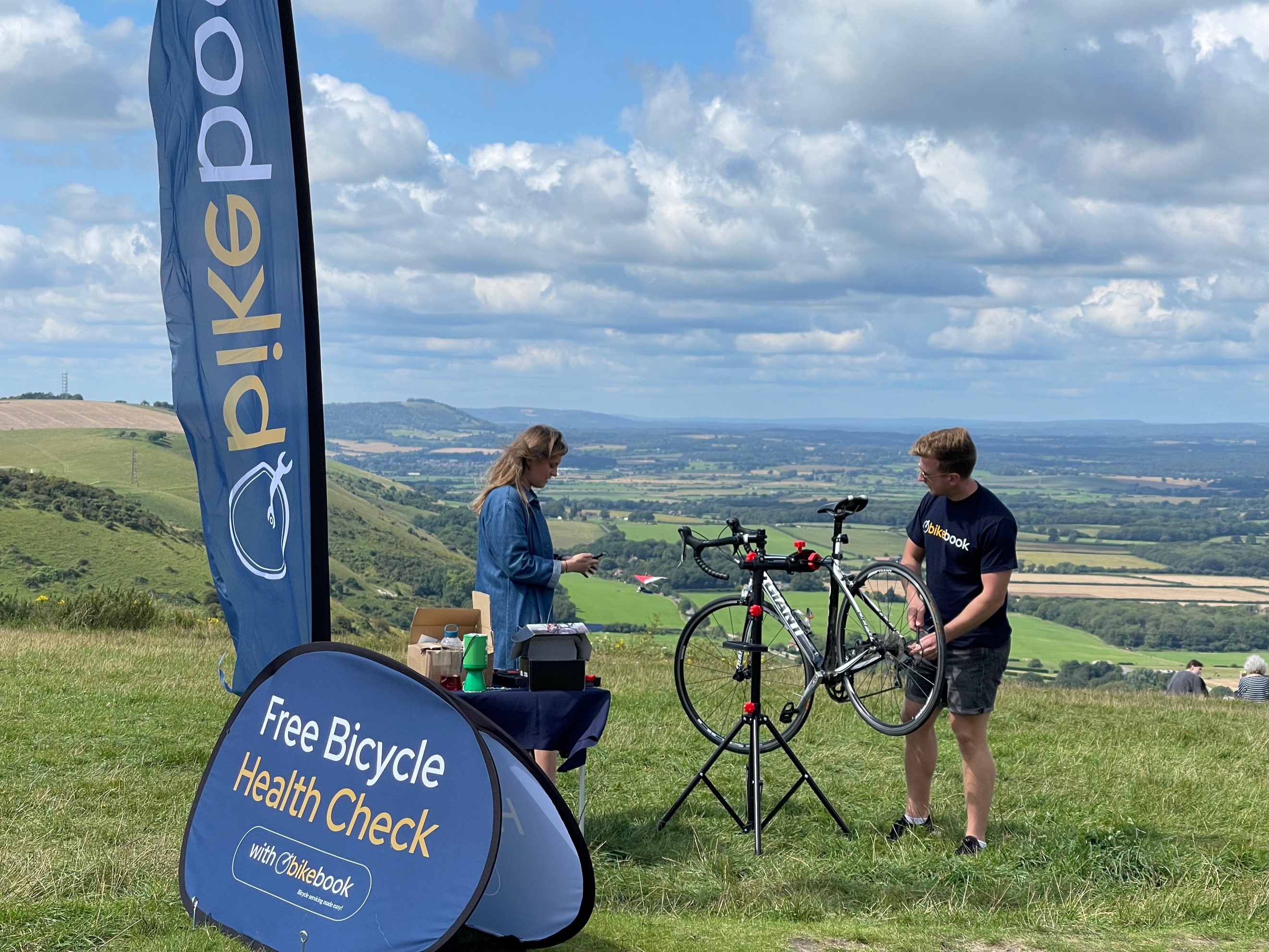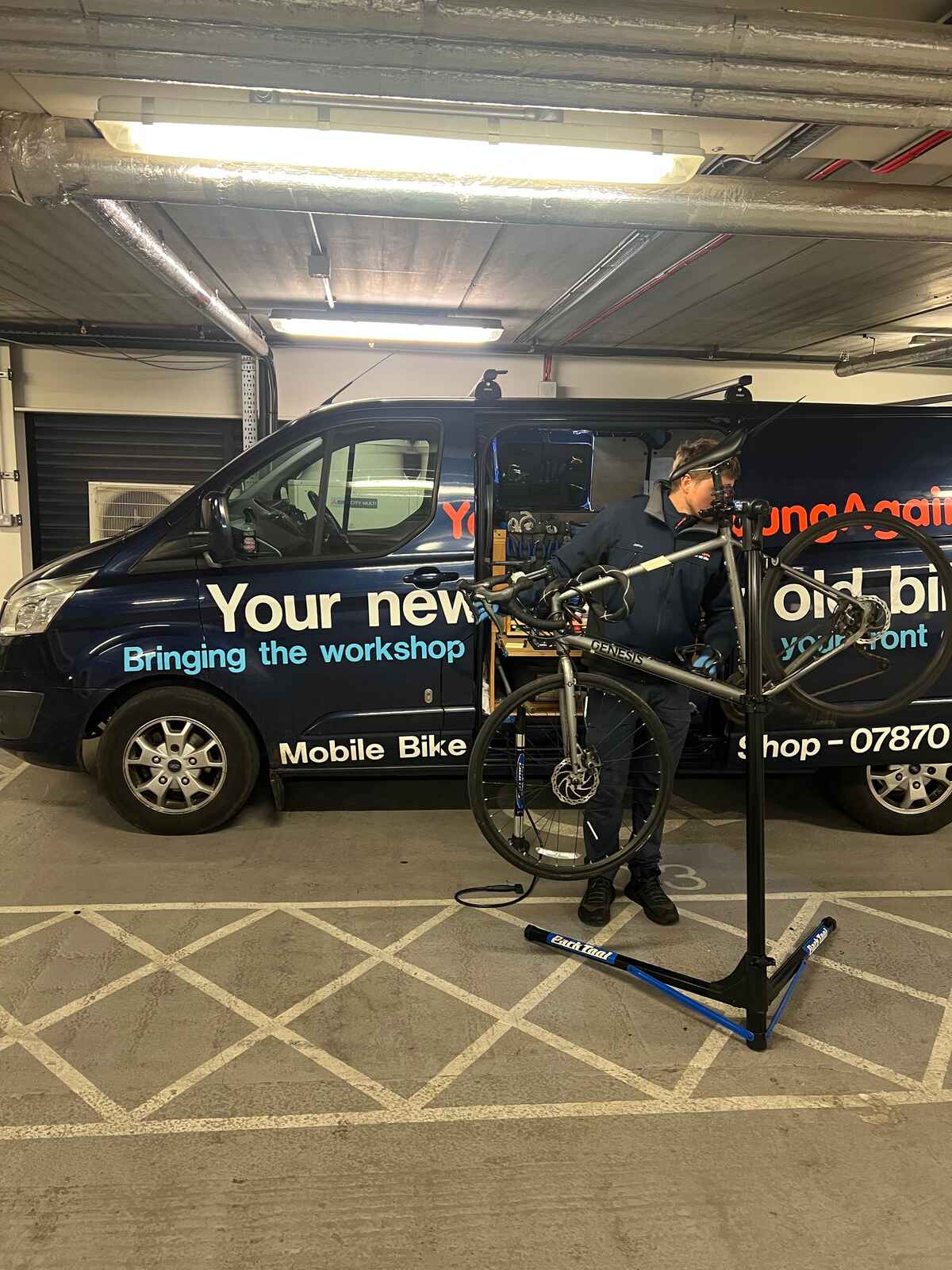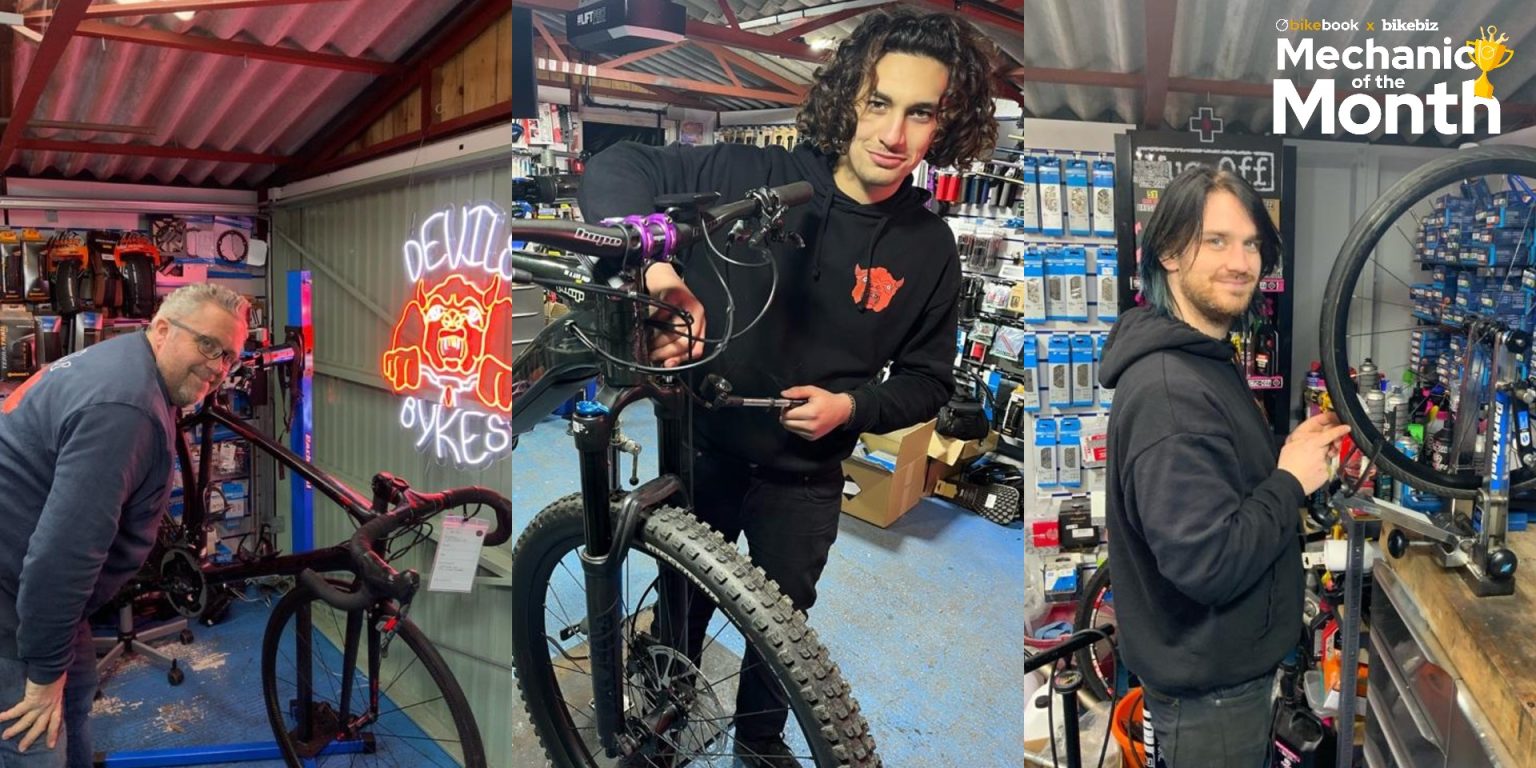January 5, 2026
•
4 minute read
The 5 step safety check for your bike
Bikebook's simple 5 step safety check that you should complete before any ride.
Jake Fieldsend
Founder & CFO
1. Check your brakes are set up correctly
Checking your bike's brakes is crucial for your safety while riding, especially if you enjoy fast descents. The first step is to spin the front and rear wheel, ensuring that the brake levers are functioning properly and can effectively stop the wheel. If the brakes feel soft and spongy, they may need to be realigned, but if you need to pull the lever all the way to the handlebar and the brakes still don't work, then you should adjust the brake pads, bringing them closer to the rim or disc. If these adjustments don't solve the issue, it might be necessary to replace the brake pads entirely. Don't neglect your brakes - they are the most important component of your bike!

2. Make sure you keep your tyres inflated
Ensuring that your bike's tyres are properly inflated may sound like a simple task, but it's actually one of the most crucial elements for a safe ride. The ideal PSI (pounds per square inch) for your tyres is often a matter of personal preference, and it may take some trial and error to find what works best for you. However, most tyres have a recommended pressure indicated on their sidewalls. If you're unsure of your preferred pressure, a good rule of thumb is to inflate your tyres within these recommended levels. Fully inflated tyres can make your ride faster, more comfortable, and less prone to punctures.
Aside from checking the air pressure, it's also important to inspect your tyres for signs of wear and tear. Look out for cuts, cracks, and flat-spots, as these can increase the likelihood of a puncture. Nobody wants to deal with a sudden flat tyre while out on a ride, so it's always better to be proactive and catch any potential issues early on.
3. Keeping your chain lubricated will save you money
Does the loud rattling and squeaking sound from the chain and sprockets of someone riding past you or from your own bike bother you? It's the sound of metal rubbing against metal and grime and mud due to the lack of lubrication. This can significantly reduce the lifespan of your chain and sprockets. Properly maintaining your drivetrain can not only result in a smoother ride but also increase the longevity of your bike's components, saving you from costly replacements. A simple habit of regularly applying chain lube and checking for rust can go a long way. To determine when it's time to replace your chain, you can either use a chain wear gauge or try pulling the chain away from the chainring. If it comes away and you can see the teeth, it's a clear sign that a new chain is needed.
4. Check your Gears!
The irritating sounds of squeaky and clicky gears can be a real downer for cyclists. Spending long hours on a bike with such distractions can make the experience less enjoyable. To avoid this, it's crucial to ensure that your gears are correctly indexed. Proper indexing not only eliminates those annoying sounds but also prevents gear slipping at traffic lights, making the ride safer for you and others.
Indexing gears is a task that can be easily done at home if you have some mechanical know-how. There are many tutorials on YouTube that can guide you through the process. However, if you are not confident or comfortable with it, it's best to visit a reliable bike mechanic for assistance. You can find one near you on bikebook. Eliminating those squeaks and clicks will not only make your ride more pleasant but will also spare your riding partner's ears.
6. A General Check of your bike
Before hitting the road, it's essential to inspect specific areas of your bike to ensure it's safe to ride. Firstly, it's vital to check that your QR skewers are appropriately tightened, and your wheels are securely attached to prevent any mishaps such as the wheels falling off midway down a descent. Additionally, it's crucial to inspect your steering and ensure it's stable by checking the tightness of the bolts on the handlebars. Rocking the bike back and forth while applying the front brake can help detect any movement that might indicate loose headsets.
Once you've completed these checks and made any necessary adjustments, it's time to get out there and enjoy your ride.



